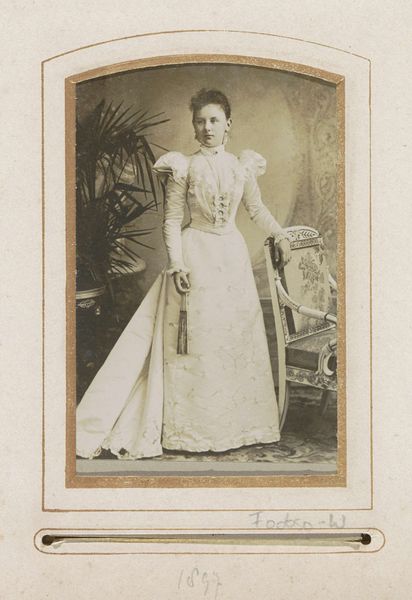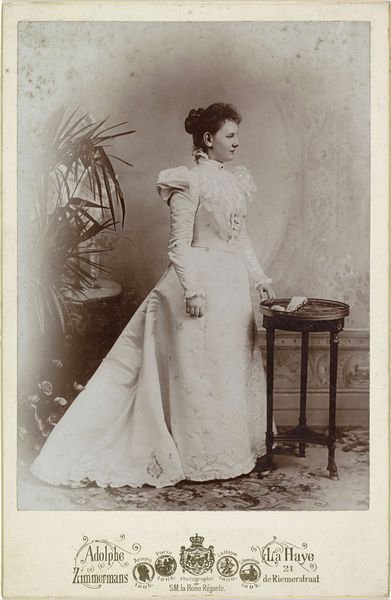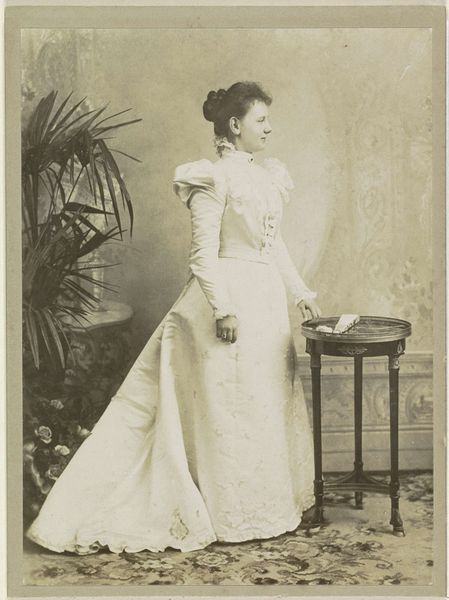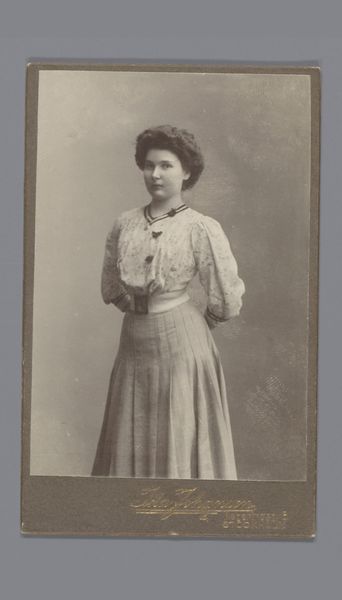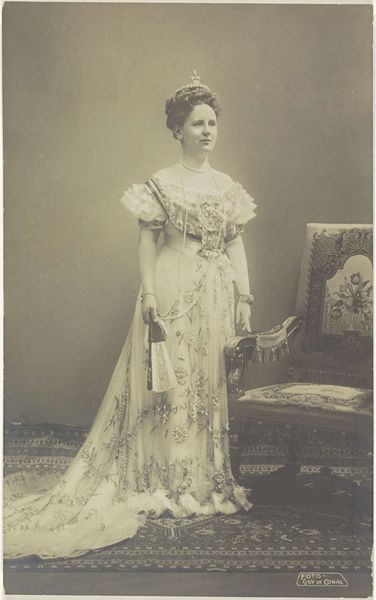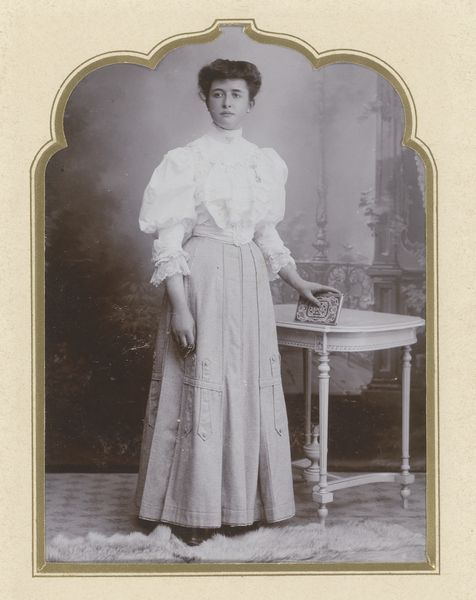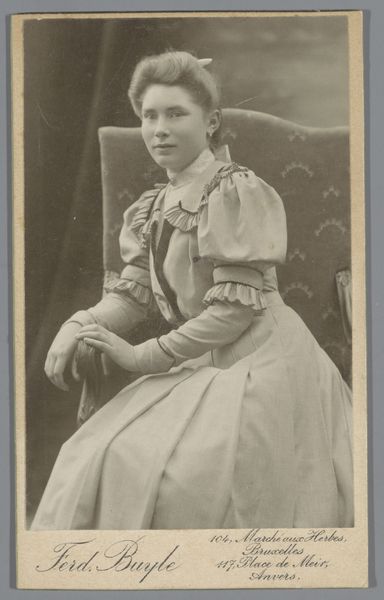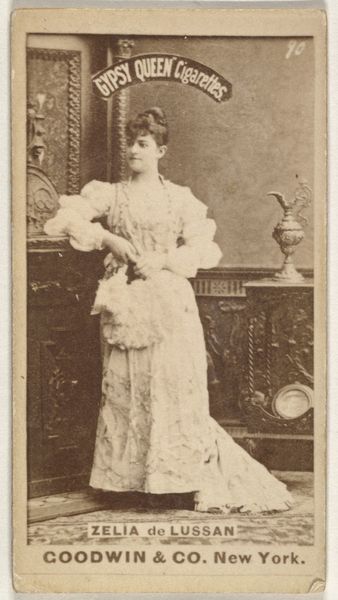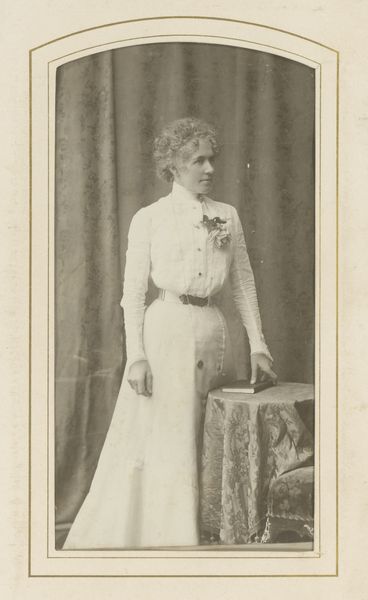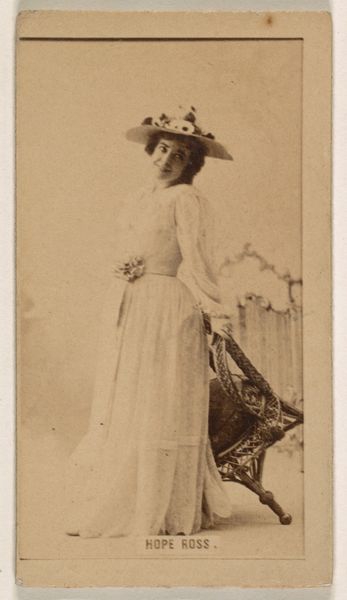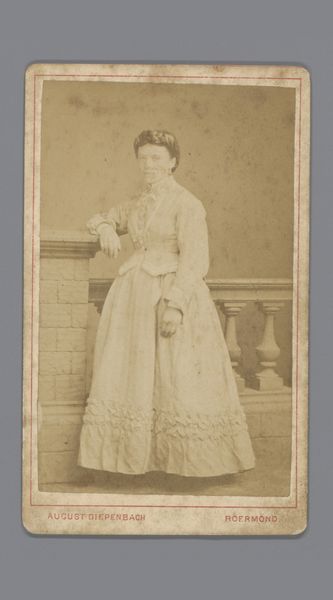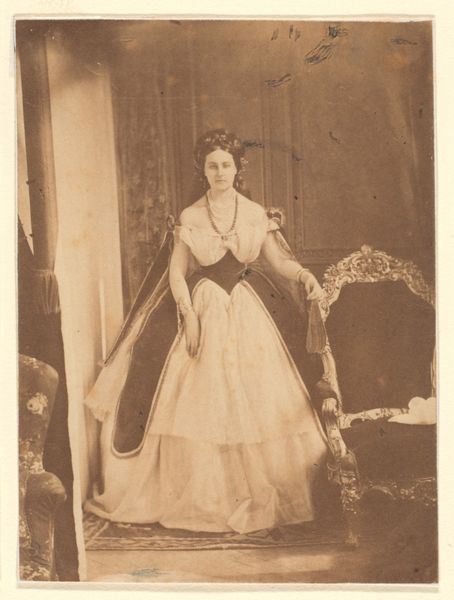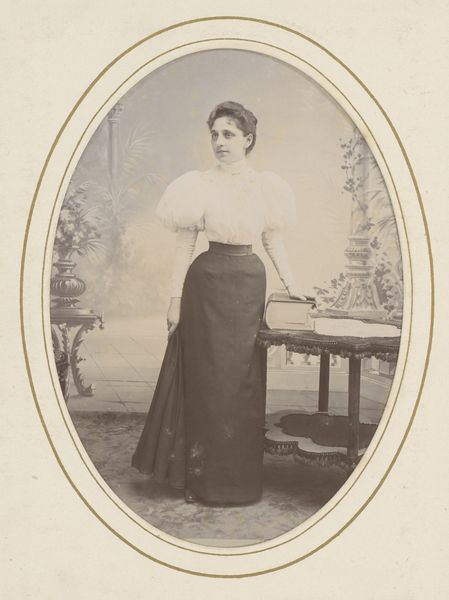
photography
#
portrait
#
photography
#
historical fashion
#
realism
Dimensions: height 138 mm, width 99 mm
Copyright: Rijks Museum: Open Domain
Curator: Adolphe Zimmermans created this albumen print in 1897. The Rijksmuseum holds this “Portret van prinses Wilhelmina” within its collection. Editor: What strikes me immediately is the stark contrast—the whiteness of her gown practically glows against the relatively muted background. There is a clear intention to capture the delicate embroidery through the contrast. Curator: Absolutely. The portrait was captured towards the end of Wilhelmina's regency and the precipice of her coronation; think of the political implications around projecting a young woman as a figurehead for the entire Dutch empire! Her controlled poise, almost stiff, embodies this period of transition and great expectation for the monarchy and the country. Editor: Yes, the composition undeniably supports the formal mood, and it projects just what was expected. It appears so carefully staged. The angle and lighting seem intent on conveying status—especially by way of fashion. Take note, for example, of how her fan mimics the lines in the chair and her dress's trim; it ties all those components together formally. Curator: Think of the societal implications here, though. Wilhelmina, at this very young age, became a symbol of Dutch national identity amidst increasing industrialization and shifting gender roles. The controlled portrait aligns precisely with constructing an image of the ideal future queen. She was only seventeen in this photography! Editor: Seventeen, yet positioned like this by Zimmermans she carries herself with a gravity beyond her years, doesn't she? One wonders about the formal intentions—to what degree do her direct stare and formal posture also act as indicators of power? I keep circling back to her attire and how meticulously detailed Zimmermans made it appear, ensuring this was at once portraiture and social symbol. Curator: These social markers extend far beyond fashion, although these do indeed speak volumes of privilege and power. To consider photography in its infancy – its documentary power meant these were not just images of individuals, but representations, political emblems. This picture shows so many markers about Dutch colonial past as well. It makes you reflect upon historical interpretations. Editor: Indeed, reflecting on it through that prism makes the artwork that much richer. Thank you for the perspective. Curator: The pleasure was all mine. This lens of analysis certainly reveals a lot.
Comments
No comments
Be the first to comment and join the conversation on the ultimate creative platform.
